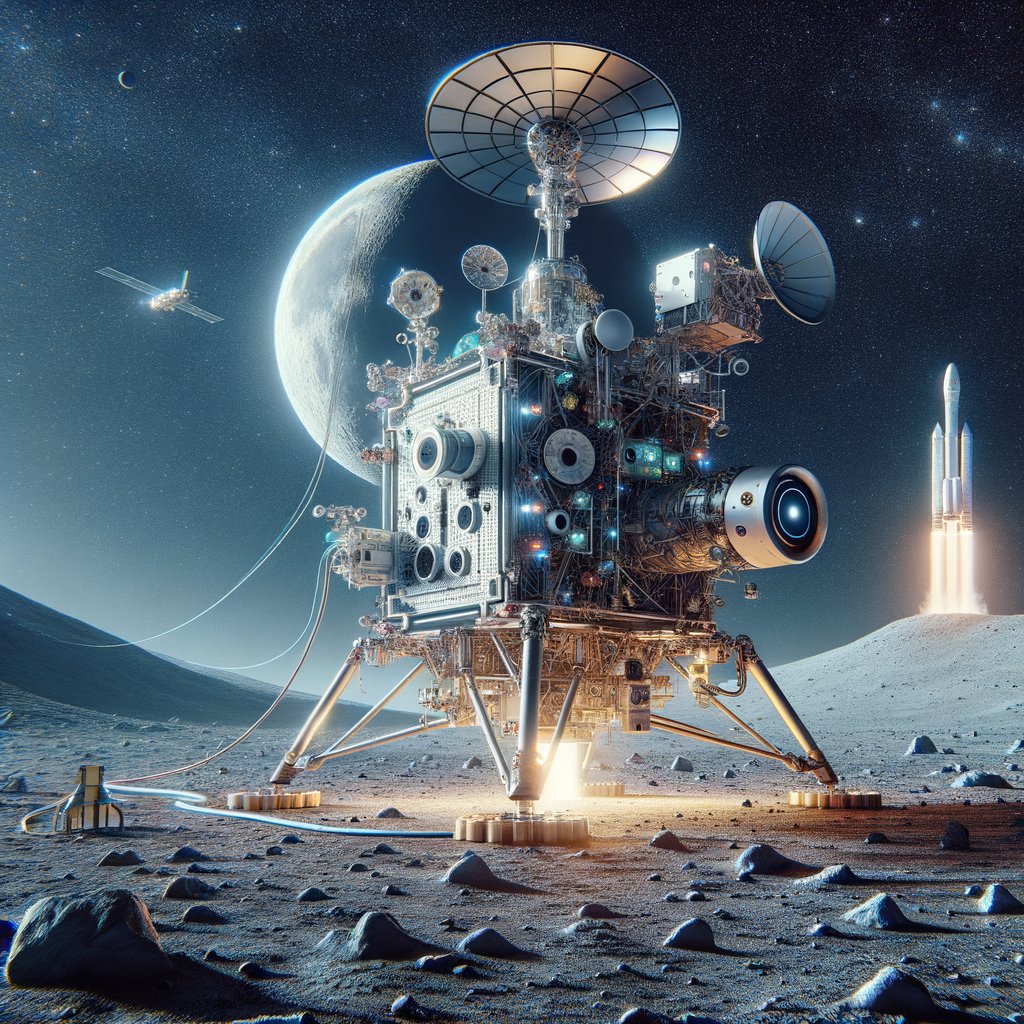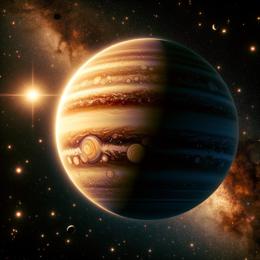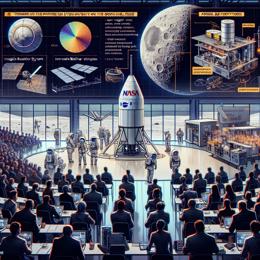Image created by AI
NASA Advances Lunar Exploration with Intuitive Machines’ Next Moon Mission
In an ambitious stride toward sustainable lunar exploration, NASA is gearing up to unveil key scientific and technological payloads aboard Intuitive Machines’ upcoming moon flight. Scheduled to discuss in a media teleconference at 1 p.m. EST on Friday, February 7, this mission highlights NASA’s ongoing commitment to its Artemis campaign, aimed at establishing a robust presence on the Moon.
The lander for this mission, named Athena, is set to embark on its journey aboard a SpaceX Falcon 9 rocket from the iconic Launch Complex 39A at NASA’s Kennedy Space Center in Florida. The launch window is set to open no earlier than Wednesday, February 26, and spans four days, providing a flexible timeline for liftoff.
Athena will carry several groundbreaking instruments designed to pioneer new technologies on the lunar surface. Among these is a unique drilling system paired with a mass spectrometer poised to analyze the volatile gases found within the lunar soil at Mons Mouton, a strategically significant plateau near the Moon’s South Pole. This demonstration will mark one of the first in-situ resource utilization experiments on the Moon, potentially paving the way for future lunar resource extraction.
Further enhancing lunar navigational technologies, Athena will be equipped with a passive Laser Retroreflector Array on its top deck. This device is designed to reflect lasers from orbiting or incoming spacecraft, providing a permanent navigational pinpoint on the Moon’s surface, which will be crucial for future missions.
Moreover, this mission will test a robust surface communications system and introduce a propulsive drone capable of hopping across the lunar terrain, showcasing the versatility of mobility technologies in the harsh lunar environment.
Riding alongside Athena, NASA’s Lunar Trailblazer spacecraft will also begin its voyage to lunar orbit. This spacecraft is tasked with mapping the different forms of water on the Moon, a critical component in understanding lunar resources and potential for supporting long-term human presence.
NASA’s collaboration with Intuitive Machines is part of the broader Commercial Lunar Payload Services (CLPS) initiative which seeks to involve commercial partners in lunar delivery services. This model not only supports NASA’s exploration goals but also fosters industry growth and innovation in space technology.
By utilizing the commercial sector's capabilities, NASA aims to streamline its operations and expand its reach on the Moon, setting the groundwork for a sustained human and robotic presence. Such strategic partnerships will be vital as NASA continues the Artemis program, working towards not just visits, but a lasting habitation on Earth’s only natural satellite.










